2-(Chloromethyl)benzoyl chloride

2-(Chloromethyl)benzoyl chloride structure
|
Common Name | 2-(Chloromethyl)benzoyl chloride | ||
|---|---|---|---|---|
| CAS Number | 42908-86-1 | Molecular Weight | 189.039 | |
| Density | 1.3±0.1 g/cm3 | Boiling Point | 282.8±23.0 °C at 760 mmHg | |
| Molecular Formula | C8H6Cl2O | Melting Point | 17 °C | |
| MSDS | Chinese USA | Flash Point | 113.9±22.9 °C | |
| Symbol |



GHS05, GHS06, GHS08 |
Signal Word | Danger | |
| Name | 2-(Chloromethyl)benzoyl chloride |
|---|---|
| Synonym | More Synonyms |
| Density | 1.3±0.1 g/cm3 |
|---|---|
| Boiling Point | 282.8±23.0 °C at 760 mmHg |
| Melting Point | 17 °C |
| Molecular Formula | C8H6Cl2O |
| Molecular Weight | 189.039 |
| Flash Point | 113.9±22.9 °C |
| Exact Mass | 187.979568 |
| PSA | 17.07000 |
| LogP | 2.48 |
| Vapour Pressure | 0.0±0.6 mmHg at 25°C |
| Index of Refraction | 1.558 |
| InChIKey | TXZFBHYDQGYOIT-UHFFFAOYSA-N |
| SMILES | O=C(Cl)c1ccccc1CCl |
|
Section1. IDENTIFICATION OF THE SUBSTANCE/MIXTURE Product identifiers Product name: 2-(Chloromethyl)benzoyl chloride CAS-No.: 42908-86-1 Relevant identified uses of the substance or mixture and uses advised against Identified uses: Laboratory chemicals, Manufacture of substances Section2. HAZARDS IDENTIFICATION Classification of the substance or mixture Classification according to Regulation (EC) No 1272/2008 [EU-GHS/CLP] Acute toxicity, Oral (Category 4) Acute toxicity, Inhalation (Category 3) Skin corrosion (Category 1B) Carcinogenicity (Category 2) Classification according to EU Directives 67/548/EEC or 1999/45/EC Harmful if swallowed. Toxic by inhalation. Causes burns. Limited evidence of a carcinogenic effect. Label elements Labelling according Regulation (EC) No 1272/2008 [CLP] Pictogram Signal wordDanger Hazard statement(s) H302Harmful if swallowed. H314Causes severe skin burns and eye damage. H331Toxic if inhaled. H351Suspected of causing cancer. Precautionary statement(s) P261Avoid breathing dust/ fume/ gas/ mist/ vapours/ spray. P280Wear protective gloves/ protective clothing/ eye protection/ face protection. P305 + P351 + P338IF IN EYES: Rinse cautiously with water for several minutes. Remove contact lenses, if present and easy to do. Continue rinsing. P310Immediately call a POISON CENTER or doctor/ physician. Supplemental Hazardnone Statements According to European Directive 67/548/EEC as amended. Hazard symbol(s) R-phrase(s) R22Harmful if swallowed. R23Toxic by inhalation. R34Causes burns. R40Limited evidence of a carcinogenic effect. S-phrase(s) S26In case of contact with eyes, rinse immediately with plenty of water and seek medical advice. S36/37/39Wear suitable protective clothing, gloves and eye/face protection. S45In case of accident or if you feel unwell, seek medical advice immediately (show the label where possible). Other hazards - none Section3. COMPOSITION/INFORMATION ON INGREDIENTS Substances Formula: C8H6Cl2O Molecular Weight: 189,04 g/mol ComponentConcentration 2-(Chloromethyl)benzoyl chloride CAS-No.42908-86-1- EC-No.255-998-2 Section4. FIRST AID MEASURES Description of first aid measures General advice Consult a physician. Show this safety data sheet to the doctor in attendance. If inhaled If breathed in, move person into fresh air. If not breathing, give artificial respiration. Consult a physician. In case of skin contact Take off contaminated clothing and shoes immediately. Wash off with soap and plenty of water. Take victim immediately to hospital. Consult a physician. In case of eye contact Rinse thoroughly with plenty of water for at least 15 minutes and consult a physician. If swallowed Do NOT induce vomiting. Never give anything by mouth to an unconscious person. Rinse mouth with water. Consult a physician. Most important symptoms and effects, both acute and delayed Material is extremely destructive to tissue of the mucous membranes and upper respiratory tract, eyes, and skin. Indication of any immediate medical attention and special treatment needed no data available Section5. FIRE-FIGHTING MEASURES Extinguishing media Suitable extinguishing media Use water spray, alcohol-resistant foam, dry chemical or carbon dioxide. Special hazards arising from the substance or mixture Carbon oxides, Hydrogen chloride gas Advice for firefighters Wear self contained breathing apparatus for fire fighting if necessary. Further information no data available Section6. ACCIDENTAL RELEASE MEASURES Personal precautions, protective equipment and emergency procedures Wear respiratory protection. Avoid breathing vapors, mist or gas. Ensure adequate ventilation. Evacuate personnel to safe areas. Environmental precautions Prevent further leakage or spillage if safe to do so. Do not let product enter drains. Methods and materials for containment and cleaning up Soak up with inert absorbent material and dispose of as hazardous waste. Keep in suitable, closed containers for disposal. Reference to other sections For disposal see section 13. Section7. HANDLING AND STORAGE Precautions for safe handling Avoid contact with skin and eyes. Avoid inhalation of vapour or mist. Conditions for safe storage, including any incompatibilities Store in cool place. Keep container tightly closed in a dry and well-ventilated place. Containers which are opened must be carefully resealed and kept upright to prevent leakage. Hydrolyses readily. Moisture sensitive. hygroscopic Store under inert gas. Specific end uses no data available Section8. EXPOSURE CONTROLS/PERSONAL PROTECTION Control parameters Components with workplace control parameters Exposure controls Appropriate engineering controls Avoid contact with skin, eyes and clothing. Wash hands before breaks and immediately after handling the product. Personal protective equipment Eye/face protection Tightly fitting safety goggles. Faceshield (8-inch minimum). Use equipment for eye protection tested and approved under appropriate government standards such as NIOSH (US) or EN 166(EU). Skin protection Handle with gloves. Gloves must be inspected prior to use. Use proper glove removal technique (without touching glove's outer surface) to avoid skin contact with this product. Dispose of contaminated gloves after use in accordance with applicable laws and good laboratory practices. Wash and dry hands. The selected protective gloves have to satisfy the specifications of EU Directive 89/686/EEC and the standard EN 374 derived from it. Body Protection Complete suit protecting against chemicals, The type of protective equipment must be selected according to the concentration and amount of the dangerous substance at the specific workplace. Respiratory protection Where risk assessment shows air-purifying respirators are appropriate use a full-face respirator with multi-purpose combination (US) or type ABEK (EN 14387) respirator cartridges as a backup to engineering controls. If the respirator is the sole means of protection, use a full-face supplied air respirator. Use respirators and components tested and approved under appropriate government standards such as NIOSH (US) or CEN (EU). Section9. PHYSICAL AND CHEMICAL PROPERTIES Information on basic physical and chemical properties a) AppearanceForm: clear, liquid Colour: colourless b) Odourno data available c) Odour Thresholdno data available d) pHno data available e) Melting point/freezingno data available point f) Initial boiling point and 135 °C at 0 hPa boiling range g) Flash pointno data available h) Evaporation rateno data available i) Flammability (solid, gas) no data available j) Upper/lowerno data available flammability or explosive limits k) Vapour pressureno data available l) Vapour densityno data available m) Relative densityno data available n) Water solubilityno data available o) Partition coefficient: n- no data available octanol/water p) Autoignitionno data available temperature q) Decompositionno data available temperature r) Viscosityno data available s) Explosive propertiesno data available t) Oxidizing propertiesno data available Other safety information no data available Section10. STABILITY AND REACTIVITY Reactivity no data available Chemical stability no data available Possibility of hazardous reactions no data available Conditions to avoid no data available Incompatible materials Strong oxidizing agents Hazardous decomposition products Other decomposition products - no data available Section11. TOXICOLOGICAL INFORMATION Information on toxicological effects Acute toxicity no data available Skin corrosion/irritation no data available Serious eye damage/eye irritation no data available Respiratory or skin sensitization no data available Germ cell mutagenicity no data available Carcinogenicity Suspected human carcinogens IARC:No component of this product present at levels greater than or equal to 0.1% is identified as probable, possible or confirmed human carcinogen by IARC. Reproductive toxicity no data available Specific target organ toxicity - single exposure no data available Specific target organ toxicity - repeated exposure no data available Aspiration hazard no data available Potential health effects Inhalation Toxic if inhaled. Material is extremely destructive to the tissue of the mucous membranes and upper respiratory tract. Ingestion Harmful if swallowed. Causes burns. SkinMay be harmful if absorbed through skin. Causes skin burns. EyesCauses eye burns. Signs and Symptoms of Exposure Material is extremely destructive to tissue of the mucous membranes and upper respiratory tract, eyes, and skin. Additional Information RTECS: Not available Section12. ECOLOGICAL INFORMATION Toxicity no data available Persistence and degradability no data available Bioaccumulative potential no data available Mobility in soil no data available Results of PBT and vPvB assessment no data available Other adverse effects no data available Section13. DISPOSAL CONSIDERATIONS Waste treatment methods Product Offer surplus and non-recyclable solutions to a licensed disposal company. Contaminated packaging Dispose of as unused product. Section14. TRANSPORT INFORMATION UN number ADR/RID: 2927IMDG: 2927IATA: 2927 UN proper shipping name ADR/RID: TOXIC LIQUID, CORROSIVE, ORGANIC, N.O.S. (2-(Chloromethyl)benzoyl chloride) IMDG: TOXIC LIQUID, CORROSIVE, ORGANIC, N.O.S. (2-(Chloromethyl)benzoyl chloride) IATA:Toxic liquid, corrosive, organic, n.o.s. (2-(Chloromethyl)benzoyl chloride) Transport hazard class(es) ADR/RID: 6.1 (8)IMDG: 6.1 (8)IATA: 6.1 (8) Packaging group ADR/RID: IIIMDG: IIIATA: II Environmental hazards ADR/RID: noIMDG Marine pollutant: noIATA: no Special precautions for user no data available Section15. REGULATORY INFORMATION This safety datasheet complies with the requirements of Regulation (EC) No. 1907/2006. Safety, health and environmental regulations/legislation specific for the substance or mixture no data available Chemical Safety Assessment no data available Section16. OTHER INFORMATION Further information Copyright 2011 Co. License granted to make unlimited paper copies for internal use only. The above information is believed to be correct but does not purport to be all inclusive and shall be used only as a guide. The information in this document is based on the present state of our knowledge and is applicable to the product with regard to appropriate safety precautions. It does not represent any guarantee of the properties of the product. Co., shall not be held liable for any damage resulting from handling or from contact with the above product. See reverse side of invoice or packing slip for additional terms and conditions of sale. |
| Symbol |



GHS05, GHS06, GHS08 |
|---|---|
| Signal Word | Danger |
| Hazard Statements | H302-H314-H331-H351 |
| Precautionary Statements | P261-P280-P305 + P351 + P338-P310 |
| Hazard Codes | F,Xi |
| Risk Phrases | R11:Highly Flammable. R36/37/38:Irritating to eyes, respiratory system and skin . |
| Safety Phrases | S16-S26-S36 |
| RIDADR | UN 3271 3/PG 2 |
| WGK Germany | 3 |
| Packaging Group | II |
| Hazard Class | 3.1 |
| HS Code | 2916399090 |
|
~65% 
2-(Chloromethyl... CAS#:42908-86-1 |
| Literature: Pietka-Ottlik, Magdalena; Potaczek, Piotr; Piasecki, Egbert; Mlochowski, Jacek Molecules, 2010 , vol. 15, # 11 p. 8214 - 8228 |
|
~% 
2-(Chloromethyl... CAS#:42908-86-1 |
| Literature: Del Soldato, Piero; Benedini, Francesca; Antognazza, Patrizia Patent: US2004/23933 A1, 2004 ; |
|
~% 
2-(Chloromethyl... CAS#:42908-86-1 |
| Literature: Goldschmidt Chemiker-Zeitung, Chemische Apparatur, 1901 , vol. 25, p. 793 |
|
~% 
2-(Chloromethyl... CAS#:42908-86-1 |
| Literature: Du Pont de Nemours and Co. Patent: US2053269 , 1935 ; |
|
~% 
2-(Chloromethyl... CAS#:42908-86-1 |
| Literature: Takahashi, Takashi; Minami, Ichiro; Tsuji, Jiro Tetrahedron Letters, 1981 , vol. 22, # 28 p. 2651 - 2654 |
|
~% 
2-(Chloromethyl... CAS#:42908-86-1 |
| Literature: Morgan; Porter Journal of the Chemical Society, 1926 , p. 1262 |
|
~% 
2-(Chloromethyl... CAS#:42908-86-1 |
| Literature: Morgan; Porter Journal of the Chemical Society, 1926 , p. 1262 Full Text Show Details Goldschmidt Chemiker-Zeitung, Chemische Apparatur, 1901 , vol. 25, p. 793 |
| Precursor 7 | |
|---|---|
| DownStream 10 | |
| HS Code | 2916399090 |
|---|---|
| Summary | 2916399090 other aromatic monocarboxylic acids, their anhydrides, halides, peroxides, peroxyacids and their derivatives VAT:17.0% Tax rebate rate:9.0% Supervision conditions:none MFN tariff:6.5% General tariff:30.0% |
|
Nanocomplexes based on amphiphilic hyaluronic acid derivative and polyethylene glycol-lipid for ginsenoside rg3 delivery.
J. Pharm. Sci. 103(10) , 3254-62, (2014) Hybrid nanocomplex formulations, based on amphiphilic hyaluronic acid-ceramide (HACE) and lipids, were fabricated for the delivery of 20(S)-ginsenoside Rg 3 [(S)-Rg3]. Nanocomplexes with less than 200... |
|
|
Interconnected hyaluronic acid derivative-based nanoparticles for anticancer drug delivery.
Colloids Surf. B Biointerfaces 121 , 380-7, (2014) Doxorubicin (DOX)-loaded nanoparticles (NPs) based on interconnected hyaluronic acid-ceramide (HACE) structure were fabricated and their anti-tumor efficacy was evaluated in vitro. Interconnected HACE... |
| MFCD00152348 |
| 2-(3-METHOXY-PHENYL)-3-PIPERAZIN-1-YLMETHYL-BENZO-[D]IMIDAZO[2,1-B]THIAZOLE |
| 1940781 |
| GVR B1G |
| o-chloromethyl benzoyl chloride |
| 2-(Chloromethyl)benzoyl chloride |
| ortho-(chloromethyl)benzoyl chloride |
| EINECS 255-998-2 |
| 2-Chloromethylbenzoyl chloride |
| Benzoyl chloride, 2-(chloromethyl)- |
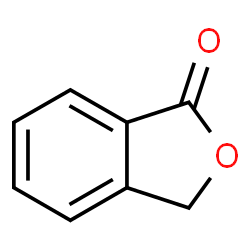
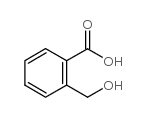

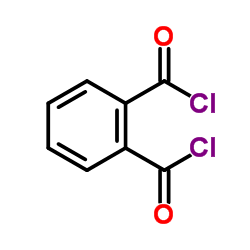

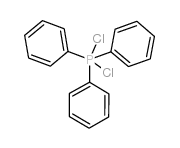
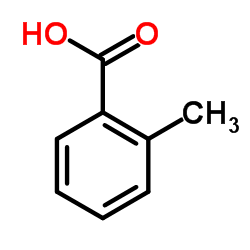

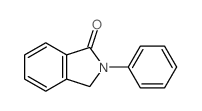 CAS#:5388-42-1
CAS#:5388-42-1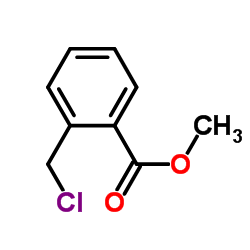 CAS#:34040-62-5
CAS#:34040-62-5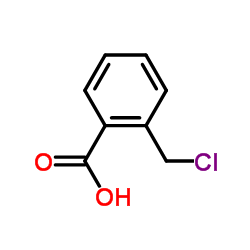 CAS#:85888-81-9
CAS#:85888-81-9 CAS#:120934-96-5
CAS#:120934-96-5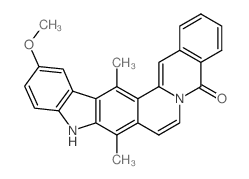 CAS#:78287-44-2
CAS#:78287-44-2 CAS#:78287-45-3
CAS#:78287-45-3 CAS#:942-57-4
CAS#:942-57-4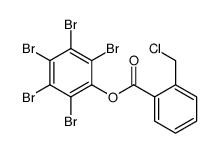 CAS#:63024-70-4
CAS#:63024-70-4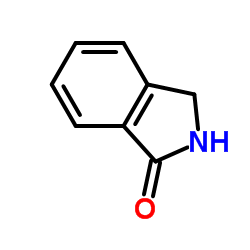 CAS#:480-91-1
CAS#:480-91-1